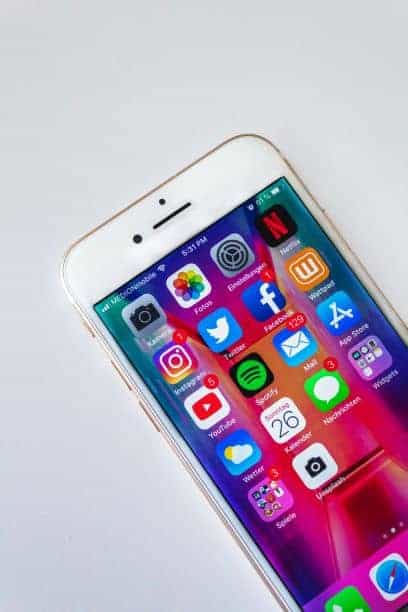Unless you’ve been living under a rock without a smartphone – yes, we can hear you. (Is your phone listening to you?)
All of us, all of you.
Us… being “the advertisers”
You know that detailed conversation you had with your friend over brunch? Sharing summer plans, upcoming vacations, and what’s not to miss in the Nordstrom Anniversary sale? You get home, hop on the couch and pull up IG and *poof* within a few scrolls you get an ad for a local travel spot, flight deals or that pair of must-have fall boots?
We feel you. Yesterday in the office – we’re sitting and chatting about MBA programs and the same thing happened. By the time I got home, Robin was getting served ads for something she had never googled, searched or sought out information for.
The interwebs are ablaze with people googling, “is my phone listening to me?”
It’s no secret this is happening. Articles detailing this experience abound… just a couple to mention;
- Instagram is listening to you
- Your phone is listening to you and it’s not paranoia
- And… you may find it mildly entertaining to watch folks on YouTube try to demonstrate this in real time, whispering words into their phone as they open apps and start scrolling.
As we explained about pixels in our previous post – your user behavior and browsing history are pretty much the backbone of programmatic advertising. The difference with your phone (or any smart audio-enabled device for that matter) is a trigger. Sam Nichols in his Vice piece detail this well;
“For your smartphone to actually pay attention and record you, there needs to be a trigger, like Hey Siri or Okay Google for example . Without these triggers, there’s no recording, with just some general metrics being sent to your service provider. This might not seem a cause for an alarm, but when it comes to apps like Facebook, no one knows what the triggers are. In fact, there could be thousands.
So while we are in the ‘biz’ we think it is just as important to pull back the curtain and be transparent where all that detailed data comes goes. Too often we know we have no choice but to ‘opt in’ when we use apps/games…and let’s get real – the fine print is fine print. It’s all legalese and tiny to read. (Not to mention I just want to download my app and start using it… right?)”
What happens after my mic sends those audio files?
As creepy as it sounds, (no pun intended) your audio files are used pretty much in the same way as programmatic ads. Just as there are DSP’s that use your data to serve you ads – there are providers that utilize these audio files to serve you ads, often in real time. For those in the advertising industry, audio capabilities in your phone are translating to TV ads and measurement,. Take one provider, Alphonso for example; Alphonso enables original equipment manufacturers, mobile application developers and (OTT) over-the-top content publishers to capture TV audience data.
Ashish Chordia, Founder and CEO of Alphonso shares their ACR (Automated Content Recognition) is what sets them apart. Per their homepage video intro:
“Embedded in all kinds of mobile apps people use in their living room – social media apps, gaming apps, news apps, a variety of them. When the TV is on these apps detect noise within the TV, the the ambient sound and just within a millisecond a digital fingerprint is created…”
They then use this data to create a one to one marketing experience. TV to smartphone ads, etc. Just as placing pixels for programmatic advertising – Alphonso’s code is in these apps also run to enable this process to be what it is today. In case you missed it – this Wall Street Journal piece highlighted some of these, certainly something Thrive will be focusing on in 2018.
The ability to ‘read’ ambient noise to know what viewers are watching is what will “take TV ad measurement and placement to the next level.”
Does Alexa Spy on Me?
We are all keenly aware how smart devices are weaving seamlessly in our homes, from fridges to home security systems (beyond our AI friends Google, Siri and Alexa). With the interconnected-ness of this all, we know some days we want our flip phones back… But in the meantime, you can always deny microphone access to any apps you do/don’t use.
- On Android: go to Settings >>> Apps & Notifications >>> App Permissions & Microphone.
- On iPhone, go to Settings & Privacy.

